James P. DeWan, an adjunct instructor at Kendall College School of Culinary Arts, has co-authored ZWILLING J.A. HENCKELS Complete Book of Knife Skills: The Essential Guide to Use, Techniques & Care (Robert Rose Inc., 2010, ISBN: 978-0-7788-0256-3). The book teaches mastery of knife techniques for both the novice and experienced chef and is the must-have cutlery reference book for anyone who loves to cook.
DeWan, chef and instructor, is also an award-winning food writer. His Chicago Tribune column, “Prep School,” is now in its fifth year. He joined Kendall College in 2008 and teaches introduction to professional cookery; introduction to stocks, sauces and soups; introduction to garde manger; methods of cooking; and culinary arts.
“Now more than ever, there is a return to cooking in the home. Yet most home cooks would agree that the one ingredient missing in their kitchen is basic knife skills,” said Renee Zonka, RD, CCE, CHE, managing director and associate dean of Kendall College’s School of Culinary Arts. “DeWan’s book is a welcome addition to everyone’s kitchen library, and reflects both his passion for culinary and the mastery of technique in cooking.”
Complete Book of Knife Skills provides valuable information about an essential kitchen tool used every day. The book covers everything about cutlery—from basic vegetable cuts to creative garnishes to boning meat and everything in-between. There is also a chapter that provides background information and photos on the types of knives available, how they are used and how to care for them.
DeWan co-wrote Complete Book of Knife Skills with Jeffrey Elliot, director of culinary relations for Zwilling J.A. Henckels, Demeyere and Staub and executive chef of Zwilling J.A. Henckels USA. Zwilling J.A. Henckels, based in Solingen, Germany, was founded in 1731 and today is one of the world’s leading manufacturers of premium cutlery, flatware, cookware, scissors and kitchen gadgets.
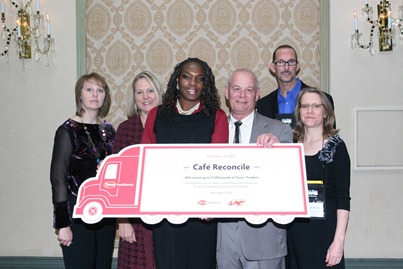 Tyson Foods' Food Service division announced on December 16 that it will donate 30,000 pounds of food to two metro New Orleans organizations, Café Reconcile and the Second Harvest Food Bank of Greater New Orleans. Donations are being made in support of the International Foodservice Editorial Council’s (IFEC) community-outreach efforts in New Orleans during its annual conference.
Tyson Foods' Food Service division announced on December 16 that it will donate 30,000 pounds of food to two metro New Orleans organizations, Café Reconcile and the Second Harvest Food Bank of Greater New Orleans. Donations are being made in support of the International Foodservice Editorial Council’s (IFEC) community-outreach efforts in New Orleans during its annual conference.
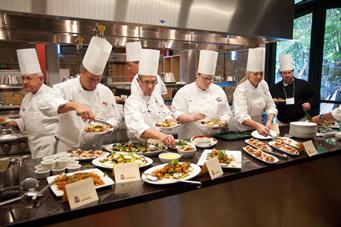 Chefs from leading foodservice and retail chains met at The Culinary Institute of America in Napa Valley in October for a custom seminar centered on U.S. Potatoes. Themed “Mediterranean Inspiration, Culinary Innovation,” the seminar took chefs through a culinary odyssey along the 38th parallel—the latitude line that runs right through the Mediterranean and the California Wine Country.
Chefs from leading foodservice and retail chains met at The Culinary Institute of America in Napa Valley in October for a custom seminar centered on U.S. Potatoes. Themed “Mediterranean Inspiration, Culinary Innovation,” the seminar took chefs through a culinary odyssey along the 38th parallel—the latitude line that runs right through the Mediterranean and the California Wine Country.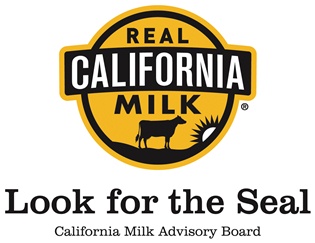 The California Milk Advisory Board recently announced a partnership with the Los Angeles Unified School District (LAUSD) to educate students about the benefits of milk and offer awards for collecting Real California Milk seals. The Real California Milk Supports Real California Schools program provides information to elementary students in the state’s largest school district about healthy eating and drinking choices and offers a chance to win prizes for themselves and their classrooms. LAUSD students and their families are encouraged to look for the Real California Milk seals in their local stores and are challenged to collect these seals for a chance to win Wii Fit™ game consoles, books and $500 classroom awards.
The California Milk Advisory Board recently announced a partnership with the Los Angeles Unified School District (LAUSD) to educate students about the benefits of milk and offer awards for collecting Real California Milk seals. The Real California Milk Supports Real California Schools program provides information to elementary students in the state’s largest school district about healthy eating and drinking choices and offers a chance to win prizes for themselves and their classrooms. LAUSD students and their families are encouraged to look for the Real California Milk seals in their local stores and are challenged to collect these seals for a chance to win Wii Fit™ game consoles, books and $500 classroom awards.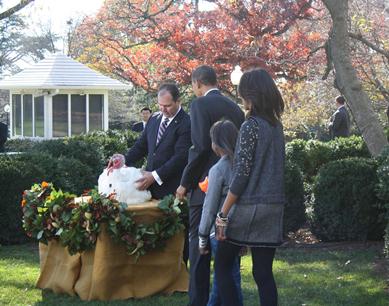 President Barack Obama on November 24 “pardoned” the National Thanksgiving Turkey in a White House Ceremony, as he and National Turkey Federation (NTF) Chairman Yubert Envia celebrated the 63rd anniversary of the National Thanksgiving Turkey presentation.
President Barack Obama on November 24 “pardoned” the National Thanksgiving Turkey in a White House Ceremony, as he and National Turkey Federation (NTF) Chairman Yubert Envia celebrated the 63rd anniversary of the National Thanksgiving Turkey presentation.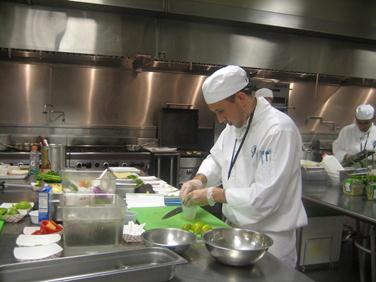 Students of Le Cordon Bleu College of Culinary Arts in Miami exhibited creativity and technical skills during the Hass Avocado Board student recipe competition, held in Miramar, Fla., on August 27. Ten students competed for cash awards with innovative and inspired recipe dishes featuring fresh Hass avocados.
Students of Le Cordon Bleu College of Culinary Arts in Miami exhibited creativity and technical skills during the Hass Avocado Board student recipe competition, held in Miramar, Fla., on August 27. Ten students competed for cash awards with innovative and inspired recipe dishes featuring fresh Hass avocados.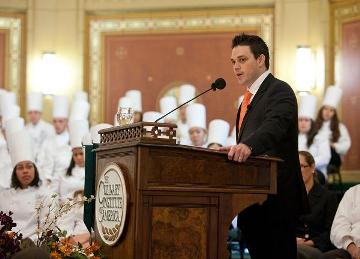 Thirty-one-year-old Gavin Kaysen, executive chef at the acclaimed Café Boulud in New York City, spoke to graduates at The Culinary Institute of America (CIA) about their need to be passionate in their career choice. Kaysen delivered the commencement address at the college on Friday, October 22.
Thirty-one-year-old Gavin Kaysen, executive chef at the acclaimed Café Boulud in New York City, spoke to graduates at The Culinary Institute of America (CIA) about their need to be passionate in their career choice. Kaysen delivered the commencement address at the college on Friday, October 22.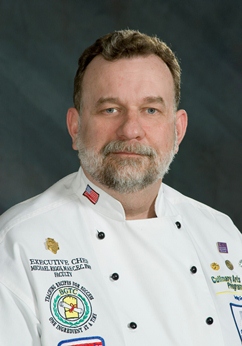 An educator returns from a summer excursion abroad with a new appreciation of community and culture communicated through food and cuisine.
An educator returns from a summer excursion abroad with a new appreciation of community and culture communicated through food and cuisine.